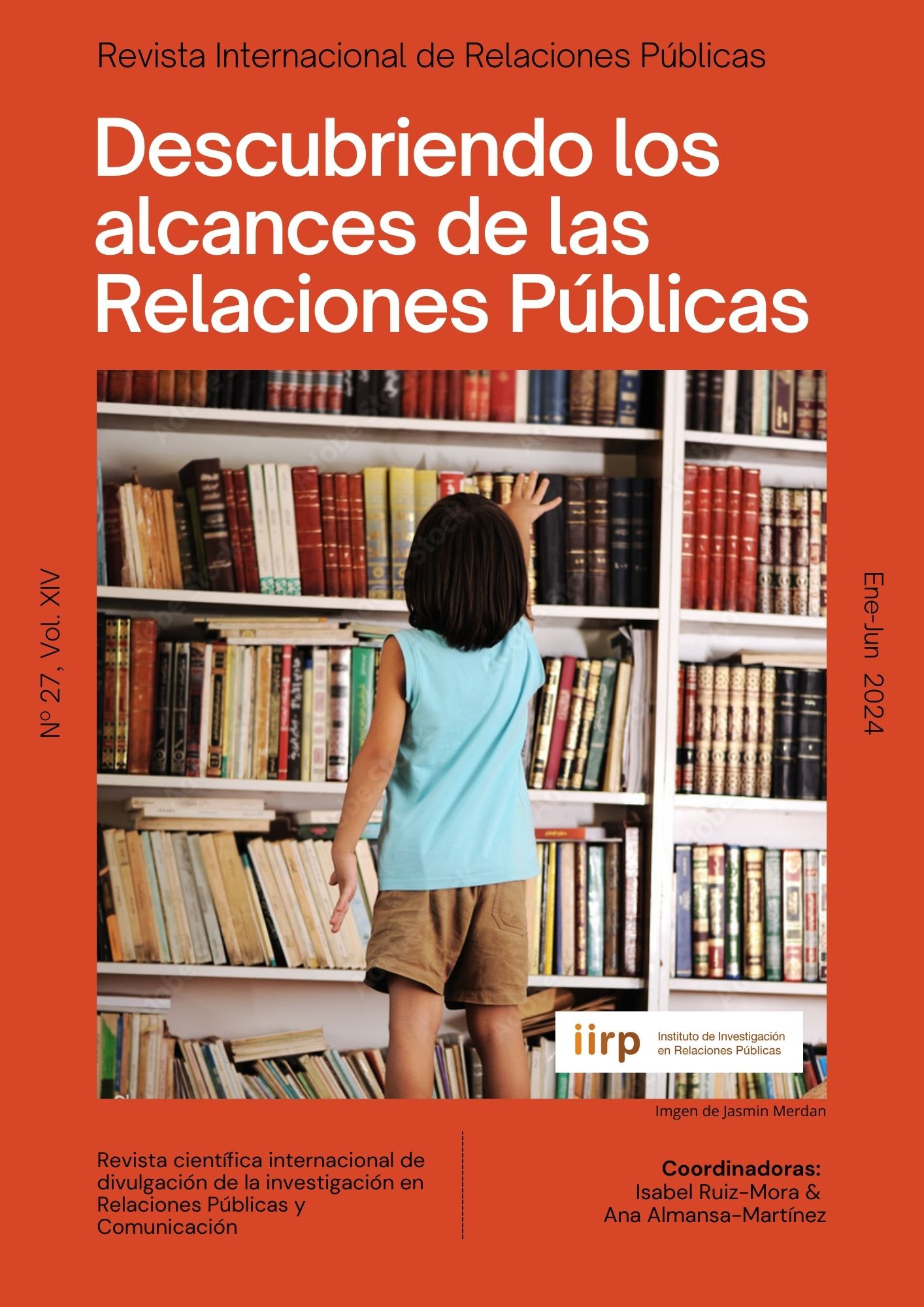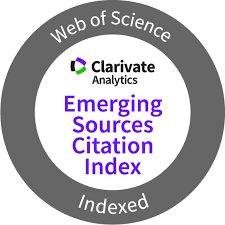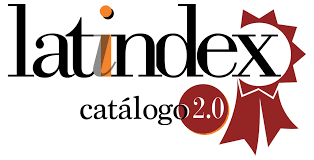La comunicación institucional de las universidades en redes sociales: estudio de la actividad y del engagement durante la crisis del COVID-19
DOI:
https://doi.org/10.5783/revrrpp.v14i27.860Palabras clave:
análisis de contenido, comunicación digital, COVID-19, engagement, universidadesResumen
Las redes sociales son una herramienta decisiva para proporcionar información útil en situaciones de crisis. Desde la pandemia de la COVID-19, las universidades utilizaron sus cuentas oficiales, en las diferentes plataformas sociales, para mantener informados a sus públicos estratégicos. El objetivo principal de este trabajo es examinar el nivel de actividad y de engagement que han generado los contenidos publicados por las universidades, en sus cuentas oficiales de Facebook y Twitter, sobre los temas vinculados con el coronavirus tras la irrupción de la pandemia de la COVID-19 en marzo de 2020. Para ello, se ha desarrollado un análisis de contenido del perfil institucional de n=70 universidades de referencia internacional (en Europa, USA y Latinoamérica), durante el año 2021, para medir el nivel de interacción que han generado dichos mensajes relacionados con la pandemia y compararlos con aquellos que no están relacionados con el virus. Los principales resultados obtenidos permiten concluir que no existen diferencias significativas entre las publicaciones relacionadas con la COVID-19 con aquellas que no tienen relación con el virus, en cuanto a los niveles de actividad y de engagement.
Descargas
Citas
Abitbol, A. & Lee, S. Y. (2017). Messages on CSR-dedicated Facebook pages: What works and what doesn’t. Public Relations Review, 43(4), 796–808. https://doi.org/10.1016/j.pubrev.2017.05.002
Atarama-Rojas, T. & Vega-Foelsche, D. (2020). Comunicación corporativa y branded content en Facebook: un estudio de las cuentas oficiales de las universidades peruanas. Revista de Comunicación, 19(1), 37–53. https://doi.org/10.26441/RC19.1-2020-A3
Ballesteros, H.C.A. (2018). El índice de engagement en redes sociales, una medición emergente en la Comunicación académica y organizacional. Razón y Palabra, 29(3), 96–124. https://goo.su/TJsU9VS
Bélanger, C.H., Bali, S. & Longden, B. (2014). How Canadian universities use social media to brand themselves. Tertiary Education and Management, 20(1), 14–29. https://doi.org/10.1080/13583883.2013.852237
Brech, F.M., Messer, U., Vander Schee, B.A., Rauschnabel, P.A. & Ivens, B.S. (2017). Engaging fans and the community in social media: interaction with institutions of higher education on Facebook. Journal of Marketing for Higher Education, 27(1), 112–130. https://doi.org/10.1080/08841241.2016.1219803
Brennan, B. & Gutiérrez, V. (2011). Guía para elaborar la estrategia de comunicación de riesgo. De la teoría a la acción. Organización Panamericana de la Salud.
Brubaker, P.J. & Wilson, C. (2018). Let’s give them something to talk about: Global brands’ use of visual content to drive engagement and build relationships. Public Relations Review, 44(3), 342–352.
Budge, K. (2019). Remember Me: Instagram, Selfies and Libraries. Journal of the Australian Library and Information Association, 69(1), 3-16. https://doi.org/10.1080/24750158.2019.1688507
Capriotti, P. & Zeler, I. (2020). Comparing Facebook as an interactive communication tool for companies in LatAm and worldwide. Communication & Society, 33(3), 119–136. https://doi.org/10.15581/003.33.3.119-136
Capriotti, P., Losada-Díaz, J.C. & MARTÍNEZ-GRAS, R. (2023). Evaluating the content strategy developed by universities on social media. Profesional de la información, 32(2). https://doi.org/10.3145/epi.2023.mar.10
Capriotti, P., Martínez-Gras, R. & Zeler, I. (2023). Does universities' posting strategy influence their social media engagement? An analysis of the top-ranked higher education institutions in different countries. Higher Education Quarterly, 00, 1– 21. https://doi.org/10.1111/hequ.12439
Capriotti, P., Zeler, I. & Camilleri, M.A. (2021). Corporate Communication Through Social Networks: The Identification of the Key Dimensions for Dialogic Communication. En M.A. Camilleri (ed.), Strategic Corporate Communication in the Digital Age (pp. 33–51). Emerald Publishing Limited. https://doi.org/10.1108/978-1-80071-264-520211003
Cho, M., Furey, L. & Mohr, T. (2016). Communicating Corporate Social Responsibility on Social Media: Strategies, Stakeholders, and Public Engagement on Corporate Facebook. Business and Professional Communication Quarterly, 80(1), 52–69. https://doi.org/10.1177/2329490616663708
Coombs, W.T. (2014). Ongoing crisis communication: Planning, managing, and responding. SAGE
Coombs, W.T. & Holladay, S.J. (2002). Helping crisis managers protect reputational assets: Initial tests of the situational crisis communication theory. Management Communication Quarterly, 16(2), 165–186. https://doi.org/10.1177/089331802237233
Denecke, K., Bamidis, P., Bond, C., Gabarron, E., Househ, M., Lau, A.Y.S., Mayer, M.A., Merolli, M. & Hansen, M. (2015). Ethical issues of social media usage in healthcare. Yearbook of Medical Informatics, 10(1), 137-147. 10.15265/IY-2015-010
Dixon, S. (2023, 13 de septiembre). Average Engagement Rate per Posts on Social Media in 2020 and 2021. Statista. https://goo.su/0C3b0F
Drylie-Carey, L., Sánchez-Castillo, S. & Galán-Cubillo, E. (2020). European leaders unmas-ked: Covid-19 communication strategy through Twitter. El Profesional de la información, 29(5). https://doi.org/10.3145/epi.2020.sep.04
Ebrahim, H. & Seo, H. (2019). Visual Public Relations in Middle Eastern Higher Education: Content Analysis of Twitter Images. Media Watch, 10(1), 41–53. https://doi.org/10.15655/mw_2019_v10i1_49563
Eger, L., Egerová, D., Tomczyk, L., Krystoň, M. & Czeglédi, C. (2021). Facebook for Public Relations in the higher education field: a study from four countries Czechia, Slovakia, Poland and Hungary. Journal of Marketing for Higher Education, 31(2), 240-260. https://doi.org/10.1080/08841241.2020.1781737
Eizmendi-Iraola, M. & Peña-Fernández, S. (2023). La visibilidad de las mujeres científicas en la comunicación externa de las universidades a través de las redes sociales. Doxa Comunicación. Revista Interdisciplinar De Estudios De Comunicación Y Ciencias Sociales, (37), 245-261. https://doi.org/10.31921/doxacom.n37a1861
Feehan, B. (2022). 2022 Social Media Industry Benchmark Report. Rival IQ. https://goo.su/z2kA0
Fernández-Luque, L. & Imran, M. (2018). Humanitarian health computing using artificial intelligence and social media: A narrative literature review. International journal of medical informatics, 114, 136-142. https://doi.org/10.1016/j.ijmedinf.2018.01.015
Ferrer-Serrano, M., Latorre-Martínez, M.P. & Lozano-Blasco, R. (2020). Universidades y comunicación. Papel de Twitter durante el inicio de la crisis sanitaria de la Covid-19. El Profesional de la información, 29(6). https://doi.org/10.3145/epi.2020.nov.12
Gori, E., Romolini, A., Fissi, S. & Contri, M. (2020). Toward the dissemination of sustainability issues through social media in the higher education sector: Evidence from an Italian case. Sustainability, 12(11), 4658-4672. https://doi.org/10.3390/su12114658
Guidry, J.P.D., Jin, Y., Orr, C.A., Messner, M. & Meganck, S. (2017). Ebola on Instagram and Twitter: How health organizations address the health crisis in their social media engagement. Public relations review, 43(3), 477-486. https://doi.org/10.1016/j.pubrev.2017.04.009
Holmes, B.J. (2008). Communicating about emerging infectious disease: The importance of research. Health, Risk & Society, 10(4), 349-360. https://doi.org/10.1080/13698570802166431
IAB Spain (2021). Estudio Anual de Redes Sociales 2021. bit.ly/3JSKS4n
Kemp, S. (2022, 26 de enero). Digital 2022: Global Overview Report. We Are Social & Hootsuite. https://goo.su/njjgT2
Kim, Y., Kim, B., Hwang, H.S. & Lee, D. (2020). Social media and life satisfaction among college students: A moderated mediation model of SNS communication network heterogeneity and social self-efficacy on satisfaction with campus life. The Social Science Journal, 57(1), 85-100. https://doi.org/10.1016/j.soscij.2018.12.001
Kimmons, R., Veletsianos, G. & Woodward, S. (2017). Institutional Uses of Twitter in U.S. Higher Education. Innovative Higher Education, 42(2), 97–111. https://doi.org/10.1007/s10755-016-9375-6
Kwok, L., Mao, Z. & Huang, Y.K. (2019). Consumers’ electronic word-of-mouth behavioral intentions on Facebook: Does message type have an effect? Tourism and Hospitality Research, 19(3), 296–307. https://doi.org/10.1177/1467358417742684
Landis, J.R. & Koch, G.G. (1977). The measurement of observer agreement for categorical data. Biometrics, 33 (1), 159-174. https://doi.org/10.2307/2529310
Liedke, J. & Matsa, K.E. (2022, 20 de septiembre). Social Media and News Fact Sheet. Pew Research Center. ibit.ly/xAys
Liu, B.F. & Kim, S. (2011). How organizations framed the 2009 H1N1 pandemic via social media and traditional media: Implications for U.S. health communicators. Public relations review, 37(3), 233-244. https://doi.org/10.1016/j.pubrev.2011.03.005
Liu, W., Lai, C.H. & Xu, W. (2018). Tweeting about emergency: A semantic network analysis of government organizations’ social media messaging during hurricane Harvey. Public relations review, 44(5), 807-819. https://doi.org/10.1016/j.pubrev.2018.10.009
Lombard, M., Snyder-Duch, J. & Bracken, C.C. (2002). Content Analysis in Mass Communication. Human Communication Research, 28(4), 587–604. https://doi.org/10.1111/j.1468-2958.2002.tb00826.x
López-Pérez, L. & Olvera-Lobo, M.D. (2016). Social media as channels for the public communication of science. The case of Spanish research centers and public universities. En K. Knautz & K.S. Baran (eds.), Facets of Facebook: use and users (pp. 241-264). De Gruyter House.
Losada-Díaz, J.C. & Capriotti, P. (2015). La comunicación de los museos de arte en Facebook: comparación entre las principales instituciones internacionales y españolas. Palabra Clave, 18(3), 889–904. https://doi.org/10.5294/pacla.2015.18.3.11
Losada-Díaz, J.C., Rodríguez Fernández, L. & Paniagua Rojano, F.J. (2020). Comunicación gubernamental y emociones en la crisis del Covid-19 en España. Revista Latina de Comunicación Social, 78, 23-40. https://www.doi.org/10.4185/RLCS-2020-1467
Marino, V. & Lo Presti, L. (2018). Approaches to university public engagement in the online environment: Insights from Anglo-Saxon higher education. International Journal of Educational Management, 32(5), 734–748. https://doi.org/10.1108/IJEM-10-2016-0215
Martin, M. (2023, 13 de marzo). 29 Twitter Stats That Matter to Marketers in 2023. Hootsuite. ibit.ly/6gPW
Mclachlan, S. (2021). How Often to Post to Social Media in 2021. Hootsuite. https://t.ly/nmrZ6
Méndiz-Noguero, A., Wennberg-Capellades, L., Regadera-González, E. & Goni-Fuste, B. (2023). Public health communication and the Covid-19: A review of the literature during the first wave. El Profesional De La información, 32(3). https://doi.org/10.3145/epi.2023.may.13
Motta, J. & Barbosa, M. (2018). Social Media as a Marketing Tool for European and North American Universities and Colleges. Journal of Intercultural Management, 10(3), 125-154. https://doi.org/10.2478/joim-2018-0020
Newberry, C. (2023, 17 de enero). 42 Facebook Statistics Marketers Need to Know in 2023. Hootsuite. ibit.ly/dGwU
Oliveira, A., Capriotti, P. & Zeler, I. (2022). El estado de la cuestión de la investigación sobre la comunicación digital de las universidades. Redmarka, Revista de Marketing Aplicado, 26(2), 1–18. https://doi.org/10.17979/redma.2022.26.2.9240
Oradini, F. & Saunders, G. (2008). The use of social networking by students and staff in higher education. Procedia. Social and Behavioral Sciences, 67, 156 – 166. https://doi.org/10.1016/j.sbspro.2012.11.316
Organización Mundial De La Salud (2020, 11 de marzo). Alocución de apertura del Director General de la OMS en la rueda de prensa sobre la COVID-19 celebrada el 11 de marzo de 2020. Organización Mundial de la Salud. https://cutt.ly/kwqJejMO
Parks, W. & Lloyd, L. (2004). Planificación de la movilización y comunicación social para la prevención y el control del dengue: guía paso a paso. Organización Mundial de la Salud.
Parmelee, S.D. & Greer, C.F. (2023). Corporate responses to the COVID-19 pandemic by Fortune 500 companies. Public Relations Review, 49(1). https://doi.org/10.1016/j.pubrev.2022.102285
Pascual-Ferrá, P., Alperstein, N. & Barnett, D.J. (2020). Social Network Analysis of COVID-19 Public Discourse on Twitter: Implications for Risk Communication. Disaster Medicine and Public Health Preparedness, 16(2), 561 – 569. https://doi.org/10.1017/dmp.2020.347
Pérez-Escolar, M., Alcaide-Pulido, P. & Del Toro, A. (2023). Nuevos referentes informativos de la generación Z. Estudio del rol de los y las influencers en TikTok como divulgadores/as de contenidos. Prisma Social, (40), 262-288. https://t.ly/uUfs5
Peruta, A. & Shields, A.B. (2016). Social media in higher education: understanding how colleges and universities use Facebook. Journal of Marketing for Higher Education, 27(1), 1–13. https://doi.org/10.1080/08841241.2016.1212451
Pourebrahim, N., Sultana, S., Edwards, J., Gochanour, A. & Mohanty, S. (2019). Understanding communication dynamics on Twitter during natural disasters: A case study of hurricane Sandy. International journal of disaster risk reduction, 37. https://doi.org/10.1016/j.ijdrr.2019.101176
Rodríguez-Vázquez, C., Teijeiro-Álvarez, M. & Blázquez-Lozano, F. (2018). Evaluation of the fanpages of Spanish universities: Public versus private institutions. Universal access in the information society, 17(4), 735-743. https://doi.org/10.1007/s10209-017-0530-3
Soboleva, A., Burton, S., Mallik, G. & Khan, A. (2017). ‘Retweet for a chance to . . .’: an analysis of what triggers consumers to engage in seeded eWOM on Twitter. Journal of Marketing Management, 33(13–14), 1120–1148. https://doi.org/10.1080/0267257X.2017.1369142
The Social Media Family (2020). VI Informe del uso de las redes sociales en España. https://bit.ly/2SCtBEA
The Social Media Family (2021). VII Informe del uso de las redes sociales en España. https://bit.ly/3g7Fsmv
Tirkkonen, P. & Luoma-Aho, V. (2011). Online authority communication during an epidemic: a Finnish example. Public relations review, 37(2), 172-174. https://doi.org/10.1016/j.pubrev.2011.01.004
Valerio-Ureña, G., Herrera-Murillo, D. & Madero-Gómez, S. (2020). Analysis of the Presence of Most Best-Ranked Universities on Social Networking Sites. Informatics, 7(9). https://doi.org/10.3390/informatics7010009
Vaughan, E. & Tinker, T. (2009). Effective health risk communication about pandemic influenza for vulnerable populations. American Journal of Public Health, 99(S2), S324–S332. https://doi.org/10.2105/AJPH.2009.162537
Vogels, E.A. & Gelles-Watnick, R. (2023, 24 de abril). Teens and social media: Key findings from Pew Research Center surveys. Pew Research Center. ibit.ly/V0JH
We Are Social & Hootsuite (2021). Digital 2021. bit.ly/3pS9bbF
White, D.S. & Le-Cornu, A. (2011). Visitors and residents: A new typology for online engagement. First Monday, 9(16). https://t.ly/uvUPR
Wirtz, B.W., Müller, W.M. & Weyerer, J.C. (2021). Digital pandemic response systems: a strategic management framework against Covid-19. International Journal of Public Administration, 44(11-12), 896-906. https://doi.org/10.1080/01900692.2020.1858316
Wise, K. (2001). Opportunities for public relations research in public health. Public relations review, 27(4), 475-487. https://doi.org/10.1016/S0363-8111(01)00102-3
Xifra, J. (2020). Comunicación corporativa, relaciones públicas y gestión del riesgo reputacional en tiempos del Covid-19. El profesional de la información, 29(2). https://doi.org/10.3145/epi.2020.mar.20
Zeler, I., Oliveira, A., & Malaver, S. (2019). La gestión comunicativa de las empresas vitivinícolas de España en las principales redes sociales. Revista Internacional de Relaciones Públicas, 9(18), 161–178. https://doi.org/10.5783/revrrpp.v9i18.617
Descargas
Publicado
Cómo citar
Número
Sección
Licencia
Derechos de autor 2024 José Carlos Losada, Paul Capriotti, Marta Pérez-Escolar

Esta obra está bajo una licencia internacional Creative Commons Atribución-NoComercial-SinDerivadas 4.0.
Los autores que publican en esta revista están de acuerdo con los siguientes términos:- Los autores conservan los derechos de autor y garantizan a la revista el derecho de ser la primera publicación del trabajo al igual que licenciado bajo una Creative Commons Attribution License que permite a otros compartir el trabajo con un reconocimiento de la autoría del trabajo y la publicación inicial en esta revista.
- Los autores pueden establecer por separado acuerdos adicionales para la distribución no exclusiva de la versión de la obra publicada en la revista (por ejemplo, situarlo en un repositorio institucional o publicarlo en un libro), con un reconocimiento de su publicación inicial en esta revista.
- Se permite y se anima a los autores a difundir sus trabajos electrónicamente (por ejemplo, en repositorios institucionales o en su propio sitio web) antes y durante el proceso de envío, ya que puede dar lugar a intercambios productivos, así como a una citación más temprana y mayor de los trabajos publicados (Véase The Effect of Open Access) (en inglés).





